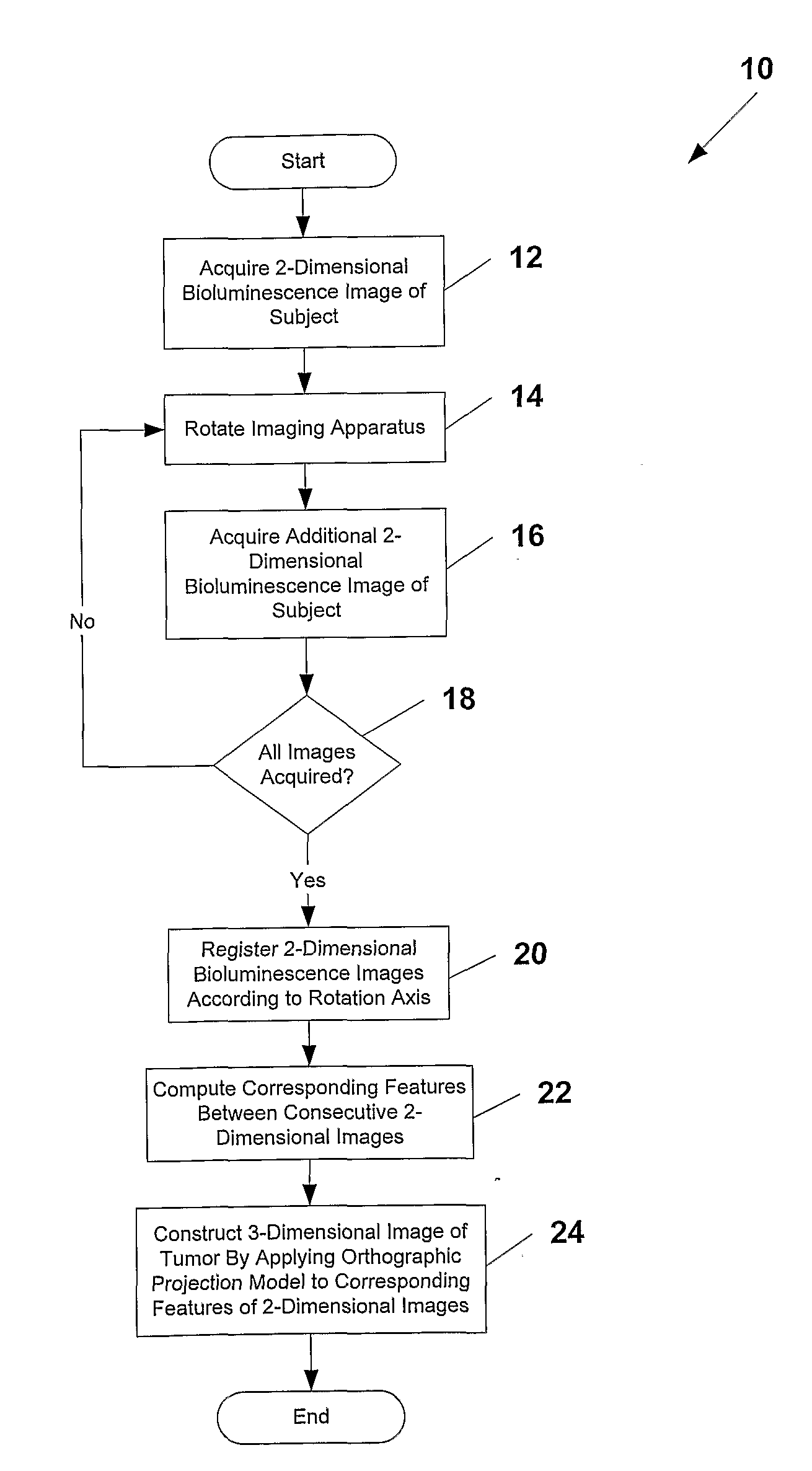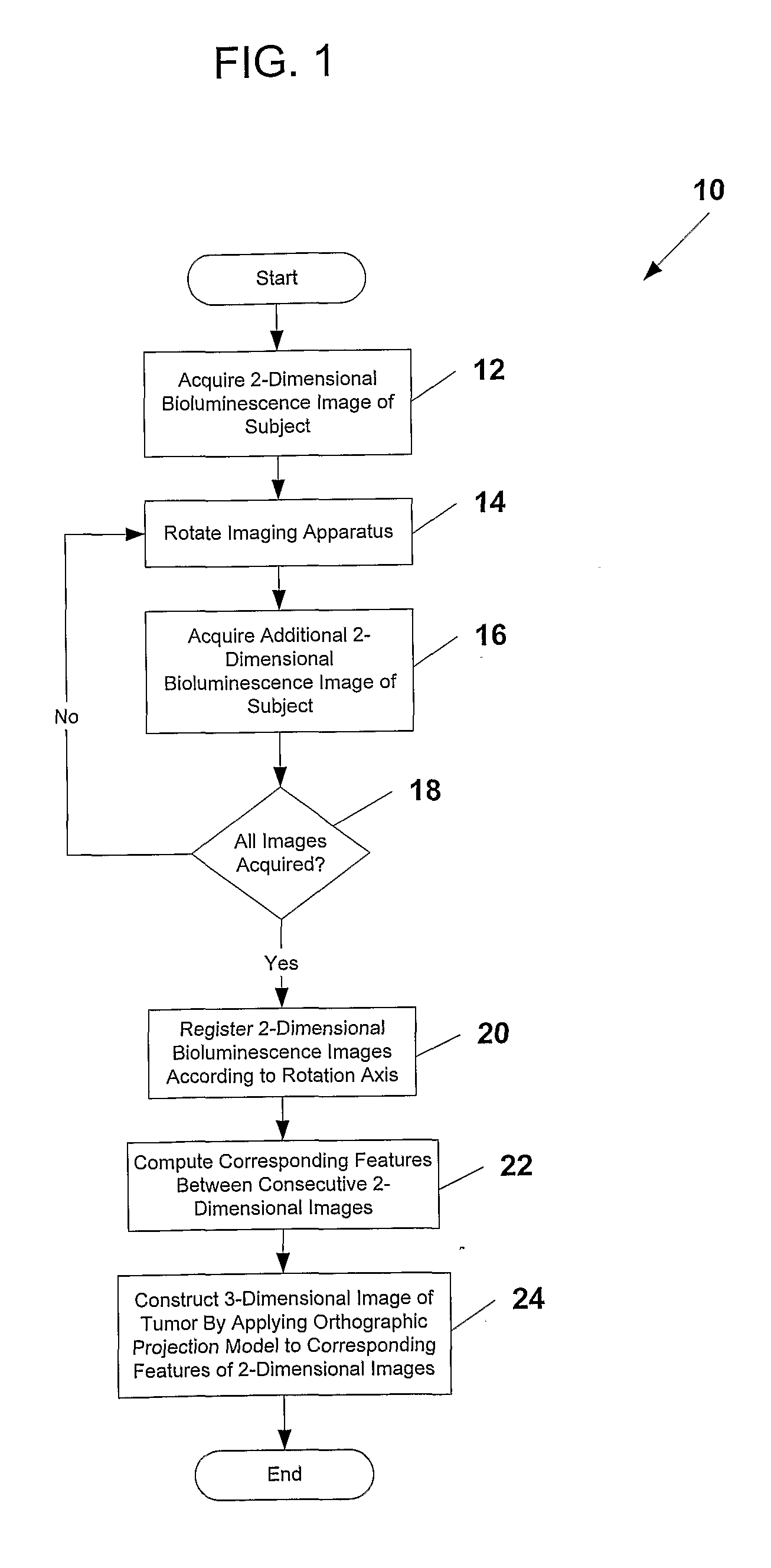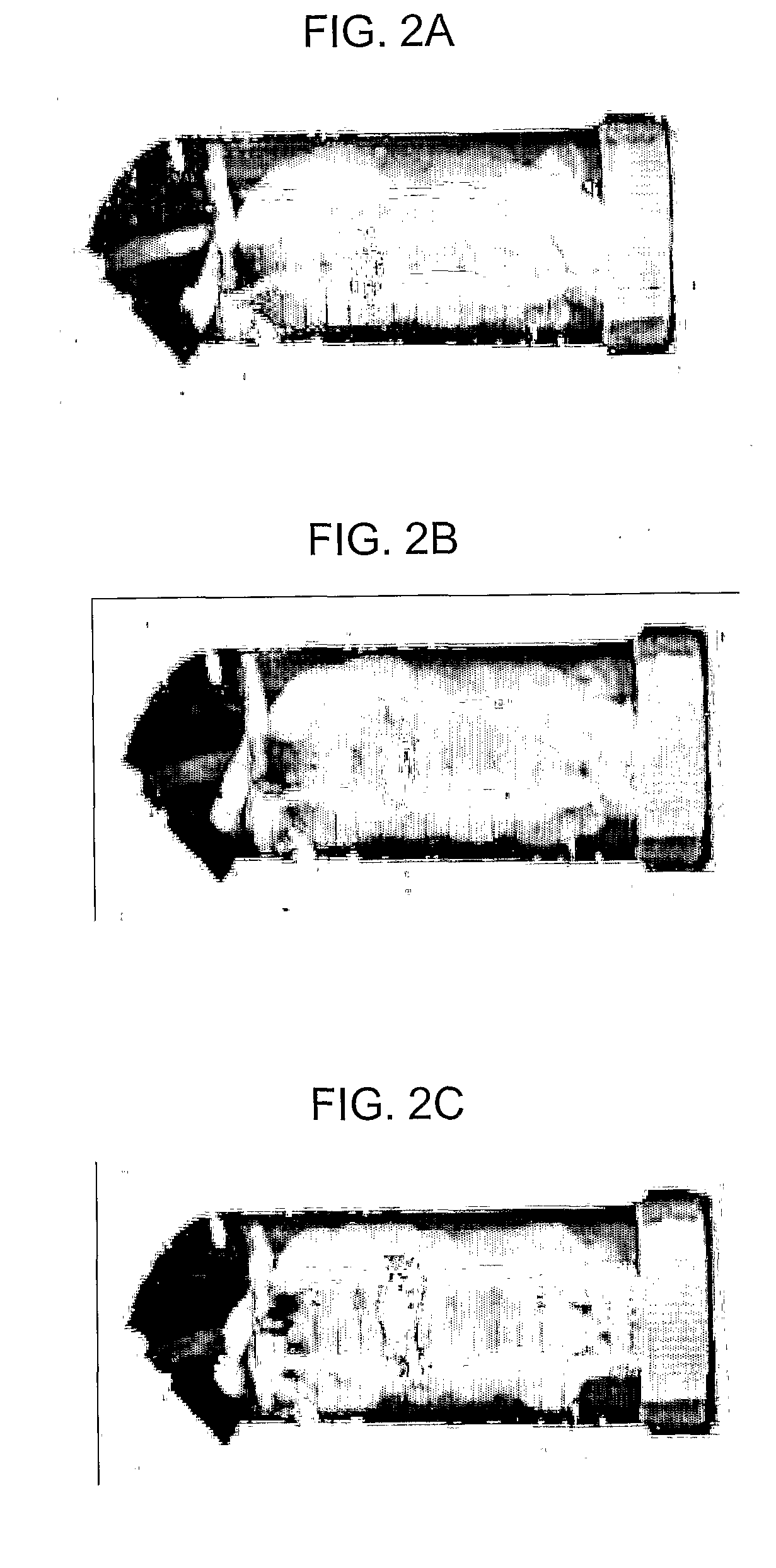System and Methods for Generating Three-Dimensional Images From Two-Dimensional Bioluminescence Images and Visualizing Tumor Shapes and Locations
a bioluminescence and image technology, applied in the field of three-dimensional image generation, can solve the problems of high cost, unsuitable for repeated and rapid imaging in laboratory settings, and ineffective efforts to generate useful 3d images with high resolution,
- Summary
- Abstract
- Description
- Claims
- Application Information
AI Technical Summary
Benefits of technology
Problems solved by technology
Method used
Image
Examples
Embodiment Construction
[0026]The present invention relates to a system and methods for generating (or reconstructing) 3D images from 2D bioluminescent images and visualizing tumor locations. A plurality of 2D bioluminescent images of a subject are acquired during a complete revolution of an imaging system about a subject, using any suitable bioluminescent imaging system. After imaging, the 2D images are registered according to the rotation axis to align each image and to compensate for differences between adjacent images. After registration, corresponding features are identified between consecutive sets of 2D images. For each corresponding feature identified in each set of 2D images, an orthographic projection technique (or model) is applied, such that rays are projected through each point in the feature. The intersection points of the rays are plotted in a 3D image space. All of the 2D images are processed in the same manner, such that a resulting 3D image of a tumor is generated. The 3D image can be reg...
PUM
 Login to View More
Login to View More Abstract
Description
Claims
Application Information
 Login to View More
Login to View More - R&D
- Intellectual Property
- Life Sciences
- Materials
- Tech Scout
- Unparalleled Data Quality
- Higher Quality Content
- 60% Fewer Hallucinations
Browse by: Latest US Patents, China's latest patents, Technical Efficacy Thesaurus, Application Domain, Technology Topic, Popular Technical Reports.
© 2025 PatSnap. All rights reserved.Legal|Privacy policy|Modern Slavery Act Transparency Statement|Sitemap|About US| Contact US: help@patsnap.com



